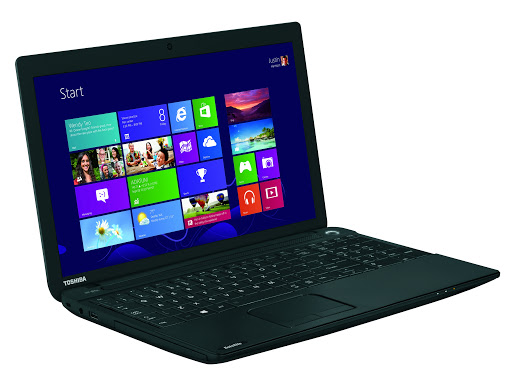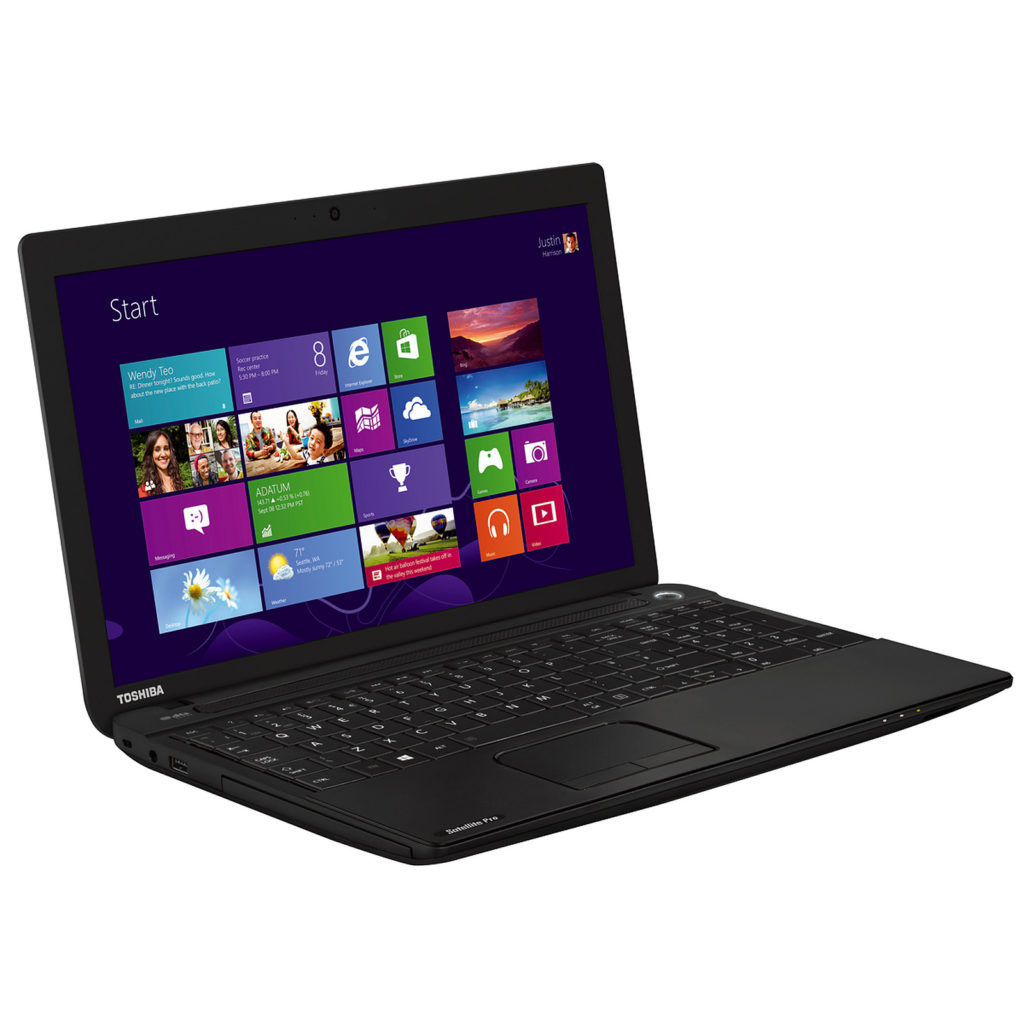Toshiba Satellite C50 Review: A new league of laptops that won’t heart your bank and Toshiba Satellite C50 will satisfy all your computing needs.
Associating a quad-core processor with an entry-level office laptop would have seemed bizarre a few years ago, but not anymore. The quad-core brigade was kicked off by AMD, and now Intel has joined the league with the Pentium quad-core processors that are not only powerful but battery efficient as well.
Toshiba has always been a promoter and marketer of entry-level office notebooks and laptops, the Satellite lineup of laptops is a decade-year-old moniker of that commitment. The newest and budget-friendly member of the Satellite family is the Toshiba Satellite C50, which blends an edgy appeal and a design that fits the modern standards of portable computers.
Toshiba Satellite C50: Design and Build
The Toshiba Satellite C50-C is a wholly remodelled version of its older brothers, with a sharp design that is almost opposite of the older ones. While the older Satellite C50 boasted curved edges with a pebble look, the Satellite C50-C has sharper edges all over, which gives it a modern look. The space grey colour scheme has been used on the lid and the keyboard deck, along with a faux metal effect and brushed finish, that makes it seem “premium”.

Despite the metallic appeal, there is virtually no metal used in the casing of the Toshiba Satellite C50, which is prone to yielding under pressure, just like its predecessors. However, the level of rigidity has increased; the fundamental aspects of the design that give away the Satellite C50 as a budget notebook are quite apparent. While the plastic hinges offer plenty of stability, lifting the lid takes two hands and needs to be pried open, since there is no opening.
The brushed aluminium appeal is just for the eyes, as the screen can be easily twisted and bent with enough force. These are all common attributes of entry-level laptops, which the Satellite C50 is also a part of. In terms of Input/Output connectivity, the notebook is amply equipped, with 1 USB 3.0 port, 2 x USB 2.0 ports, an HDMI port, a DVD drive, SD Card Reader, and an audio combo jack.
Toshiba Satellite C50: The Display
While the design and build quality have seen improvement in comparison to the older versions, the display of the Toshiba Satellite C50 remains equally mediocre. The 15.6-inch screen comes with a TN panel and native resolution of 1366 x 768 pixels, which is a common sight among entry-level notebooks. With a brightness measurement of 227 cd/m2 and a lower pixel density of mere 100 PPI, the display is highly reflective.

The TN display panel is infamous for its poor viewing angles and low brightness, which makes the Toshiba Satellite C50’s screen barely visible under the sun. With a contrast ratio of 668:1, the Toshiba Satellite C50 is actually above the category average of (200 – 400:1). The relatively high contrast ratio results in higher coverage of the sRGB colour spectrum (74%). The TN display panel reduces the viewing angles, as colour distortion is visible after 45 degrees.
Toshiba Satellite C50: Keyboard and Touchpad
The keyboard is another attribute of the Toshiba Satellite C50 that has been revamped to suit a modern look. The full-sized chiclet-style keyboard comes in black, which is distinctive over the space grey colour, but the absence of backlight illumination limits the visibility at night. The keys have short travel and a crisp click, which makes it ideal for long term usage, while the hairline finish on the keyboard deck offers comfortable palm rest as well.
The Touchpad of the Toshiba Satellite C50 is similar in composition and size in comparison to the older models but has been enhanced for Windows 10. The matte finish surface is ideal for gliding, recognises multi-touch gestures, and comes with the Cortana activation gesture as well. The click keys are separate from the touchpad, which makes the primary drag and drop feature simper, but give back a typical cheap clicking sound.
Toshiba Satellite C50: Under the Hood
The Toshiba Satellite C50 comes equipped with the Intel Pentium N3700 quad-core processor, based on the Bay Trail platform. This new generation of Intel processors is faster than the older Atom processors, but not quite capable as the Intel Core processors used in higher-end laptops. With a base speed clocked at 1.6GHz, the Turbo Boost technology from Intel brings up the clock speed to 2.4GHz. The laptop comes with 4GB of DDR3 SDRAM, but the system is capable of handling up to 8GB RAM.
Being a simple office notebook, the SSD storage option is not available for the Satellite C50. However, it can be easily installed by swapping out the 500GB HDD that the laptop comes installed with. In terms of graphical power, there is very little that the Satellite C50 can do with its onboard IntelHD Graphics GPU. The graphics card can take up video and multimedia processes and is barely capable of playing some less graphic intensive games on low settings.
Pros:
- Battery efficient paired hardware that works as intended.
- Decent quality keyboard and size with swift and crisp keystrokes with gives good typing experience.
- They recreated design features that give it a premium look.
Cons:
- Low-quality display screen and poor viewing angles.
- The plastic casing shell is susceptible to yield under pressure.
The Final Verdict
The Toshiba Satellite lineup from Toshiba has always been symbolised in providing cost-effective office laptop solutions. The Toshiba Satellite C50 lives up to its name by providing the same efficiency, prolonged battery life and powerful hardware.
Whether it is for office work, playing videos, watching movies or video conferencing, the Toshia Satellite C50 is the perfect budget laptop for all requirements. While almost every other competing notebook comes in the same price range and the same specs, what sets the Satellite C50 apart is the quiet and calm operation, which is perfect for a work environment.
Why do you need a VPN on your device? Find here!
Related Posts.
- Building Your Own Windows 10 PC? Best Practices.
- Acer Aspire E5-573G Review: A Mid Ranger For Gamers
- Best Hidden Features in Windows 10.
- DuckDuckGo vs Google- Why You Should be Using it?
- Petya (NotPetya) Ransomware is Taking over WannaCry.
- Want To Install Opera free VPN?
- Best VPN for Australia- Why The Need It
- 4 Ways To Keep Facebook Privacy In Check.
- The Surveillance State: The CIA Can Wiretap YOU.
